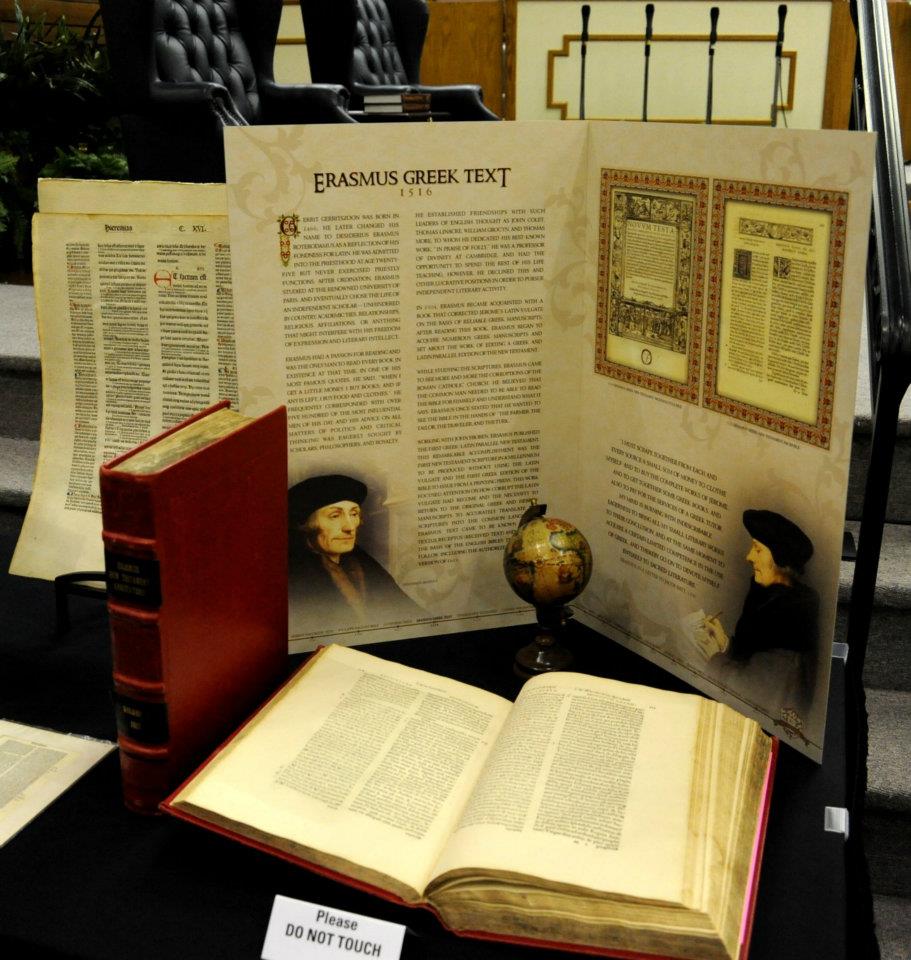|
**List: Gothic Ministry
Bible ( Bibel )
Gothic...
"The Goths, an Eastern Germanic people, first enter
history in the
3rd century A.D., when they were settled north of the Black
Sea. They soon split into the Ostrogoths (East Goths) and Visi-
goths (West Goths).
The Ostrogoths became allies of the Eastern Roman
Empire and,
prompted by Constantinople, conquered Italy and set up their
capital at Ravenna. During the 6th century their kingdom was
overthrown, and the Ostrogoths gradually lost tneir identity.
The Visigoths, who had preceded their Gothic
kinsmen into
eastern Europe, settled in Moesia and Dacia during the 4th cen-
tury. Here they encountered Christianity as a result of the mis-
sionary work and Gothic Bible translation of Ulfilas.
Late in the
same century they began their rampaging migration across
southern Europe. At the time they conquered (but only briefly
held) Italy, southern Gaul, and Spain.
Their capital was estab-
lished at Toledo, and the Visigoths quietly assimilated the
developing Spanish culture and
language.
Now extinct, Gothic is placed in a East Germanic language
group, with its ‘dead’ sister tongues: Vandalic (the tongue of
another migratory people, who set up a powerful kingdom in
north Africa during the 5th century), and Burgundian (the
language of an East Germanic tribe that settled in Burgundy and
later merged with the Franks).
It is interesting that this Gothic
civilization, with its distinct language, did not leave a trace of
influence on the subsequent Germanic culture.
Ulfilas, or Wulfila
(d. 383?) translated the Bible into (Visi)Gothic
‘with the exception of the Books of
Kings which he omitted
because they are a mere narrative of military exploits and the
Gothic tribes were especially fond of war’. Numerous fragments
of 5th- and 6th-century manuscripts preserve portions of this
early translation. Most noteworthy is the magnificent Codex
Argenteus, written in silver and gold on purple parchment. It is
now in Uppsala in the University Library. Although there is no
scholarly consensus on the derivation of the characters, it seems
that about 20 were borrowed from Greek
uncial script, five from
the Latin alphabet, and two were invented
signs, possibly in-
spired by runes. The Gothic, or ‘black letter’, type used
in
printing has no connection with Ulfilas’ alphabet, which, to
avoid confusion, is termed Moeso-Gothic. This Moeso-Gothic
character is used for some of the earlier printings." --1000 Tongues,
1972 [Info only]
"A number of critical editions of Gothic
Scriptures have been
published."--1000 Tongues, 1972 [Info only]
"The language of the Visigoths,
or Western Goths who lived in what is
now Bulgaria in the fourth century.
...."--1000 Tongues, 1939 [Info
only]
|
"First publication, the
Gospels
from the Codex Argenteus (manuscript), edited by T. Marshali
and F.
Junius, Dordrecht, 1665."--1000 Tongues, 1939 [Info
only]
|
GOTHIC--1000 Tongues, 1939 [Info only: Mœso-Gothic characters
"1750" Mark 3:30-4:1 unknown.]
Moeso-Gothic Character
1750 Mark--1000 Tongues, 1972
[Info only:
MOESO-GOTHIC CHARACTER "1750" Mark 1:2 incorrect (ЄSAi¨iN
ΠRAnFΕΤAn = Isaiah prophet).]
|
Adapted Roman Character
1891 Mark--1000 Tongues, 1972
[Info only:
ADAPTED ROMAN CHARACTER "1891" Mark 1:2 incorrect (Esaïin
praufetau = Isaiah prophet).]
|
**File: Gothic Bible History (3)--1860
S. Bagster [Info only]
"Ulphilae versionem gothicam nonnullorum capitum
Epistolae Pauli ad Romanos : venerandum antiquitatis monumentum pro amisso
omino atque adeo deperdito per multa saecula ad hunc usque diem habitum; e
litura codicis cuiusdam manuscripti rescripti qui in augusta apud
Guelpherbytanos bibliotheca adservatur una cum variis variae litteraturae
monimentis huc usque ineditis / eruit commentatus est datque foras Franciscus
Antonius Knittel ... ([Brunovici] : L. H. E. C., principale apud Brunovicenses
orphanotropheum, [1762])" [Info only: Romans.]
https://catalog.hathitrust.org/Record/008959902
"Fragmenta versionia Ulphilanae, continentia
particulas aliquot epistolae Pauli ad Romanos ... ed. a Johanne Ihre ...
(Upsaliae, 1763)" [Info only]
http://catalog.hathitrust.org/Record/001789135
"Ulfilas Gothische Bibelübersetzung : die
älteste Germanische Urkunde nach Ihre'ns Text, mit einer grammatisch-
wörtlichen Lateinischen Uebersetzung zwischen den Zeilen, samt einer
Sprachlehre und einem Glossar / ausgearbeitet von Friedrich Karl Fulda ... ;
das Glossar umgearbeitet von W.F.H. Reinwald ... ; herausgegben von Iohann
Christian Zahn ... (Weissenfels : gedruckt bei Johann Friedrich Leyckam ... ,
1805)" [Info only]
https://catalog.hathitrust.org/Record/008407376
"The Gothic Gospel of Saint Matthew : from the
Codex Argenteus of the fourth century; with the corresponding English, or
Saxon, from the Durham book of the eighth century in Roman characters ... / by
Samuel Henshall. (London : Printed for the Author, and sold by J. White,
1807)" [Info only]
https://catalog.hathitrust.org/Record/005767233
"Ulfilas. Veteris et Novi Testamenti versionis
gothicae fragmenta quae supersunt ad fidem codd. castigata, latinitate donata,
adnotatione critica instructa, cum glossario et grammatica linguae gothicae
coniunctis curis ediderunt H. C. de Gabelentz et dr. J. Loebe ... (Lipsiae
apud F. A. Brockhaus, 1836-46)" [Info only: Bible parts.]
https://catalog.hathitrust.org/Record/001925844
"Ulfilas. Urschrift, Sprachlehre,
Wörterbuch von Ign. Gaugengigl. Revorwortet von Michael Fertig. (Passau,
Pustet, 1848)" [Info only]
https://catalog.hathitrust.org/Record/006568996
|

